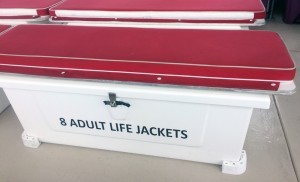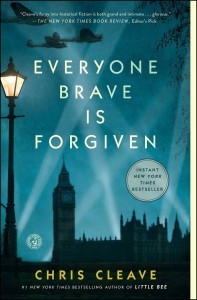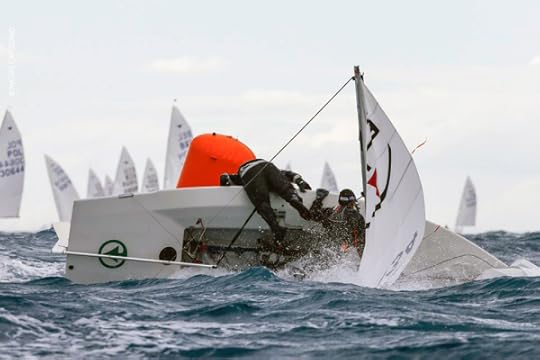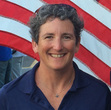Carol Newman Cronin's Blog, page 45
August 3, 2017
Vote for Your Favorite Book Description
Today’s authors can’t just write stories and then send them off to be polished and packaged into books. No matter how we choose to publish our work, we need to be involved in the marketing of it as well. And that means coming up with a one-line description and “blurb” for the back cover that will entice readers to buy.
 And because we have the least perspective of all, I need your help. Which of the following most intrigues you? Please vote for your favorite one-liner (A or B) and your favorite blurb (1-3) in the comments below. (If you have a thought you’d prefer to share privately, feel free to send an email to carolncroninATgmailDOTcom.)
And because we have the least perspective of all, I need your help. Which of the following most intrigues you? Please vote for your favorite one-liner (A or B) and your favorite blurb (1-3) in the comments below. (If you have a thought you’d prefer to share privately, feel free to send an email to carolncroninATgmailDOTcom.)
Thank you!
Vote for your favorite one-liner answer to “what’s this book about?”
A. “Island Shell Game is about a bunch of locals who band together to save their island from the next development project.”
B. “Island Shell Game is about a ferry captain who tries to save his island from a vindictive developer.”
Vote for your favorite blurb
1. You won’t find Brenton Island on any actual chart, but it’s only a forty-minute ferry ride away from Newport, Rhode Island. When the long-time ferry captain James Malloy is replaced by a cheaper, less experienced captain, the change upends the tiny community—but it also might end up saving the island’s last wilderness from developers.
2. Tiny Brenton Island has two separate communities—the whites and the Narragansett Indians—despite the unification efforts of its long-time ferry captain, James Malloy. When James is replaced by a female ferry captain and his best friend Indian Joe dies, the island’s careful balance—and its last open land—may be headed for extinction.
3. When Brenton Island’s long-time ferry captain James Malloy is fired, it seems like a simple misunderstanding at first. But mostly forgotten island history has created a vendetta that soon threatens the entire community. Only James can bring the islanders together—but will he pass up the chance to escape his tiny childhood home?
July 27, 2017
Fog and First Readers
This morning, paddling out into a very foggy harbor, I was reminded of the comparison between writing and navigation. In either case, as long as you know where you are and can see what’s just in front of you, you can feel your way, step by step, to your final destination.
The navigation goal was a paddleboard yoga session, so the hundred-yard visibility created privacy rather than stress. And it did seem quite appropriate, since today is when the new book will finally emerge from the hazy solitude of my hard drive to meet its first reader.
Choosing a first reader can be a tough thing for some authors; I’m lucky enough to have one in-house. Paul has a good eye for inconsistencies and a great sense of story; he also remembers what made him laugh and which plot twists surprised him most. After all the intricacies of writing storylines so cross-woven that my eyes are starting to cross themselves, I’m looking forward to his big-picture perspective.
And while my first reader is working his way through the longest and most complicated book I’ve ever written, I will be forced to take a break from it. I will miss hanging out with my imaginary island buddies, but stepping back to reality is also the only way to gain some perspective of my own on the story—which will make the next round of edits a lot easier.
Sharing this story is the next step forward. And hopefully, it will help clear away the fog so I can better see what’s needed, before we reach the final destination.
July 20, 2017
Book Review: Everyone Brave Is Forgiven
 My college major was twentieth century European History and my favorite genre is the historical novel, so I’ve read a lot about World War II. And yet no previous book ever brought to life the Blitz and the siege of Malta as well as this newest novel by Chris Cleave. It’s a story of love, friendship, and the ability to hang on against the backdrop of total war, set in two very different places. Once again, Cleave (author of Little Bee and Gold) has created characters who let us into their world, and the combination of language and details often kept me awake long after I’d regretfully put the book down and turned out the light.
My college major was twentieth century European History and my favorite genre is the historical novel, so I’ve read a lot about World War II. And yet no previous book ever brought to life the Blitz and the siege of Malta as well as this newest novel by Chris Cleave. It’s a story of love, friendship, and the ability to hang on against the backdrop of total war, set in two very different places. Once again, Cleave (author of Little Bee and Gold) has created characters who let us into their world, and the combination of language and details often kept me awake long after I’d regretfully put the book down and turned out the light.
Cleave says the main character (who starts out in a supportive role) was inspired by his grandfather, who served in Malta during WWII. The female character, Mary, draws on both his grandmothers’ experiences in wartime England. Our current world of plenty, with its petty concerns and distant wars, makes it very hard to imagine how people dealt with bombings and hunger and shortages, all while still maintaining the “standards” that so carefully divided classes and races into very clear and well-understood groups. As Mary puts it, “It was simply a peculiarity of the British that they could be stoical about two hundred and fifty nights of bombing, while the sight of her with a Negro child offended their sensibilities unbearably.”
Cleave’s use of language is clever without ever being overdone. Similes and metaphors sparkle, doing their work without distracting, but the real linguistic joy of this book is in the witty conversational banter between friends and family and lovers. Love (platonic and otherwise) lies between every line, rarely spelled out but always understood nonetheless.
Unfortunately the ending lacked the punch and wit of the rest of the book. There were also a few dropped stitches in the plot toward the end. Maybe I was just too tired to absorb the subtleties (reading later than I should have, of course, hungry to finish). Or maybe the rest of the book had just set too high a standard for any ending to be truly satisfying.
Cleave’s writing is an inspiration to perfect every paragraph until it sings. Mary’s sarcastic wit makes me wish to be more clever in everyday conversation. And the ability of all these characters to wake up and deal with the grim reality of war makes me appreciate my own comforts and privilege. So Cleave accomplished the lofty goal he mentions in his excellent afterword—which is so much more than the usual afterthought:
“When I was beginning the project I might have said that by writing a small and personal story about the Second World War, I hoped to highlight the insincerity of the wars we fight now—to which the commitment of most of us is impersonal, and which finish not with victory or defeat but with a calendar draw-down date and a presumption that we shall never be reconciled with the enemy. I wanted the reader to come away wondering whether forgiveness is possible at a national level or whether it is only achieveable between courageous individuals.
“As I wrote, though, I realized I was digging an even smaller hole than that. Now I hope that readers will see the book simply as the honest expression of wonder of a little man descended from titans, gazing up at the heights from which he has fallen.”
Your local bookseller probably has this book on the shelves, since Cleave’s previous book Little Bee was a bestseller. And for those of you who enjoy a good Olympic love story, I can also recommend his less popular novel, Gold.
July 13, 2017
Freelancers: Feral or Friendly?
freelance |ˈfrēˌlans| (adjective). Working for different companies at different times rather than being permanently employed by one company.
It’s a slippery concept, freelancing. It can indicate anything from a hard-working independent contractor to someone trying to build cover for a life of idle leisure. And maybe that slipperiness is why clients are often so uncertain about us.
Fortunately, in the twenty-plus years of my work life, the concept has evolved from uncomfortably odd to mainstream normal. Here’s a look back at how things have changed—and a few things that remain stubbornly the same.
20th Century Feral
On my very first writer’s business card, I identified myself as a “freelance writer.” Long before those cards ran out (sometime in the early 1990s), a more seasoned journalist told me that “you’ll never make any money if you include the word freelance in your title.” I never put it on a business card again.
Except for a few specific fields like journalism, freelancers were still somewhat suspect well into the last decade of the 20th century. Reaching out to a potential client, I often had to explain the concept: No, I’m not looking for a job with your company, but I can help you with this specific project. We were too independent to be trusted—like feral cats who roamed company parking lots, snatching any food that was put out for us and then disappearing again without a cuddle or purr.
Internet of Work
Then along came the World Wide Web, which made it possible to work anywhere and remain in communication. Suddenly everyone wanted to work from home—though many soon realized they were more productive in a real office.
As employee benefit costs began to skyrocket, even large firms began to see the value of hiring people who fended for themselves between projects. We became “contract workers,” a term that seemed to convey availability on a client’s schedule rather than fly-by-night flightiness. As freelancing became more respectable, I no longer had to explain to clients how I worked; I just came in, completed the job, and left again—independent rather than feral, friend rather than foe—and not sucking the payroll dry between projects.
Gigging into the future
These days, freelancing has become so commonplace that it’s earned itself a shorter name: “gig” work. We don’t even have to limit ourselves to one field anymore; I can now admit to my writing and editing clients that I sometimes do canvas work on the side.
And yet even as the name changes yet again, the concept remains slippery. Independent contractors can be hard workers or fly-by-nights, feral or fully domesticated. And in most cases, the only way to find out is through trial and error, because titles don’t tell us much—even if they don’t include the word “freelance.”
July 6, 2017
Writing: What’s Next?
I’m going to let you in on a secret: I’m getting close to finishing book #4. Which is both terrifying and terribly exciting—and also a little bittersweet.  Terrifying because it will soon be time to change my Dr. Seuss hat for the suave, cool wide-brim of the Marketing Director. Terribly exciting, because I get to share it with all of you. And bittersweet, because I’ll soon have to stop living in an alternative universe of my own creation.
Terrifying because it will soon be time to change my Dr. Seuss hat for the suave, cool wide-brim of the Marketing Director. Terribly exciting, because I get to share it with all of you. And bittersweet, because I’ll soon have to stop living in an alternative universe of my own creation.
The other question, of course, is What’s Next. A sequel? I’d love it, because I really like these characters—and it seems a shame to let them fade away after building such a detailed world. But since I’ve tried to hold nothing back in this book, I also don’t have any idea at the moment where a sequel might lead.
No worries
Even if it means building a whole new world all over again, I’ve been through this cycle enough times now to trust that there will be a next book. Once my brain has been cleared of its current muddle of , point of view, and breadcrumbs, my imagination will start churning again… and who knows what quick and seemingly unimportant scene it will latch onto next?
The inspiration
It really doesn’t seem like any specific “leaf blowing down the street” moment was responsible for this story. Instead it began as a vague wish to explore an ongoing curiosity about island life: not an island like the one I actually live on, which is connected on either side by bridges to the mainland and yet another island; but the true geographic isolation of a small bunch of rock physically connected to the rest of the world only by a daily ferry.
Stay tuned for an actual publishing date… and until then, I can only promise (again) that it will be worth the wait.
June 29, 2017
June: Pure Potential
For years, I’ve referred to June as the month of pure potential. It’s my favorite month of the year since I celebrate a birthday, so its possibilities have always seemed quite personal. And even now that early June often seems wet and dreary, we know that by the end of the month summer will arrive at last.
This is the time of year when boats are launched, summer plans are hatched, and the possibilities and energy levels seem limitless. We vow to make good on those February dreams: to paddle AND sail every day, to swim every morning, to spent every waking moment outside. In the garden, everything is electrified: annuals and perennials alike vie for best-dressed flower, no matter how much time went into their actual planting or how deep their roots actually go.
When July arrives, it will bring a little more heat and humidity—as well as a few limiting realities (time, energy, inside chores, billable hours). A month from now, those August dog-days will slow progress even more. But for now, it’s still June: the month to take deep breaths, to make plans, to try a new outdoor activity—or just stand in one place and watch the sunset or sunrise. And to rig and ready more water toys than we may really have time to use.
New England’s seasons may be shifting, but June still holds the promise of unlimited possibility. It reminds us to play, to seek new adventures, to challenge ourselves. And even as we bid it goodbye for 2017, I’m already looking forward to next year’s month of pure potential.
June 22, 2017
Hours vs. Experience: Sailing to Woods Hole
Family visits to Woods Hole on the southwest corner of Cape Cod usually mean an 80 mile drive, and with summer traffic the delays can be bad even at off-peak hours. So for our most recent visit, Paul and I chose to sail there instead—and since Buzzards Bay then becomes part of the route rather than a watery obstacle, the distance drops to only 40 miles door to door. Besides, we’d both rather spend six hours riding waves than two hours wrestling with road rage.
We left midmorning on Friday and by time the southwest breeze kicked in, we were off Newport—with only a few other sailboats in view. We set an asymmetrical spinnaker that easily handled the building breeze, and soon we were enjoying the dinghy-like qualities of the 31 foot Archambault. She tracks well, but she’s also very responsive to an active helm. Steering up a wave helps to catch the next one for a nice ride down it, just like dinghy sailing. After an hour of steering, I said, “So much fun to drive—but this isn’t a beginner boat.” Paul replied, “No—it’s a Snipe you can sleep on.”
We made it to Woods Hole in time for a family dinner ashore and a quiet night sleeping aboard. Saturday morning’s forecast called for strong southwesterlies both Saturday and Sunday afternoons, and we decided to take off after lunch so we could divide the upwind sail home into two stages. But when we got to the western end of Vineyard Sound, the current was with us, the breeze was warm and steady, and the bow was pointing toward home. So instead of stopping for an early night in Cuttyhunk, we opted for a fast close reach and made it back to the mooring before sunset. Again, the boat’s hull shape and design made the six hour sail fun and relatively dry. And all the deck layout modifications Paul made over the winter make it easy to sail the boat shorthanded.
Our next planned cruise is to Fishers Island, thirty-five miles to the southwest. We’ll probably get to do the upwind part first this time—which is kind of like doing your chores first, getting the less enjoyable part out of the way early on.
Sailing to our destinations instead of driving does require more hours, but the quality of that time spent is so much higher that it’s well worth it. Riding waves instead of riding shotgun, there’s no speed limit—and a lot less traffic.
June 15, 2017
Capsize: Leaving the Comfort Zone
A few weeks ago, I managed to add a new “first” to my long list of competitive sailboat racing experiences. This one I would’ve been perfectly happy to avoid altogether: my first capsize while steering a Snipe.
Snipes are dinghies, and dinghies do tip over. As a crew, I’ve even capsized in light air (are you reading this, George Szabo?). But as a skipper, my boathandling tends to be fairly conservative. That can be slower, but it also reduces the chance of any “issues”—even in epic ocean conditions like we had on the first day of the Snipe North American Championship, held off Fort Lauderdale.

A different regatta, a different Snipe, and probably a quicker recovery… but still a departure from the team comfort zone. Photo courtesy Matias Capizzano
The actual capsize happened quite fast; in a nanosecond, my top concern toggled from “are we going fast enough to hold off the boats behind us” to “are we going to drown?” Thanks to an excellent safety boat, lifejackets, and eighty degree water, it all ended well. We got back in the boat, sailed the next two races, and two days later we finished the North Americans in seventh overall.
Since then, I’ve replayed that capsize in my mind in an attempt to learn from it. The specific causes (a random combination of the right wave and the wrong foot placement) don’t provide many useful lessons, but it has provided an excellent reminder about how quickly we can be wrenched out of our comfort zone. One second I was pumping the mainsheet to fly down a wave, fully engaged in the accelerating thrill of a planing Snipe… and the next second I was desperately hanging on to that same piece of line, trying to keep the boat within swimming distance when it flipped.
I’m working toward my third decade in competitive sailing, and I’ve developed a lot of good boathandling habits that allow me to safely compete in just about any condition—even the big wind and waves of ocean sailing. That said, it was good to be reminded how quickly things can go wrong. There’s a first time for everything, and this latest “first” will make me better prepared the next time I leave my comfort zone.
June 8, 2017
Walking in Other Moccasins
In the world these days, we are constantly advised to look at current events from a different perspective in order to bridge the widening gap between our viewpoints. While I’m not very good at that, I have become quite adept at seeing my fictional island world from the perspective of a different character—which always leads to a deeper, richer, version of what happens on the page.
The new book is told from several first-person perspectives, and after going public with the first chapter a few months ago I realized that I needed more balance between the various viewpoints. Most of the first-draft chapters were written from one of two primary perspectives, only straying into new territory for scenes where those two characters wouldn’t have been present. Better balance meant re-visiting several of those scenes from the viewpoint of another character altogether. (It also meant eliminating other scenes that didn’t move the story forward, but that’s another post altogether.)
I’d read more than once that a change in character perspective could help writers who are stuck, though I’ve never had the discipline to try it; I prefer to write my way out of plot-holes. But structural necessity has become the mother of a new habit, and I must admit to finding this new technique slightly addictive. Seeing events unfold through a different pair of eyes always leads to new insights: about the characters, but also about the “whys” behind what’s taking place. Without taking the time and effort to rework these scenes, I never would’ve “seen” the story quite so clearly.
I know enough about my island folks now to instantly realize what each would notice about a particular scene, and it’s different for each one. As it becomes easier and easier to step into another character’s moccasins (or flip flops, or deck shoes), I will try to remember to see the real world through a few different lenses too.
June 1, 2017
Saying No to Summer Go Cups
I recycle. I pick up trash from the beach and road side. I like to think I’m a tiny part of the solution to the plasti-problem.
But I’m also part of the problem itself, because I love iced coffee.
Iced coffee to go used to mean filling a plastic cup with ice, coffee, half and half, and then topping it with a plastic lid and inserting a straw. For the past few months I’ve skipped the straw, which means removing the lid each time I want a sip. That basically eliminates sipping while underway—another of summer’s great pleasures.
It’s also hard to see how skipping the straw is going to solve the plasti-problem when I’m still walking away with a single-use plastic cup and lid—even though they almost always get recycled.
So here’s my public vow for the summer of 2017: I promise to reduce my single-use cup (plastic or paper) consumption to a maximum of one per month. (Hopefully I can eliminate them all together… but I may need a “bye” once in awhile.)
I’ve stashed a stainless mug in my car. I will stash another in my bike basket. And I will respond to all sourpuss servers with a smile when they grimace about having to handle a clunky mug.
I promise not to get preachy about this if I see you with a plastic cup. But I also welcome anyone who cares to join me in my pledge to Say No to To Go Cups this summer. It doesn’t mean giving up our favorite iced drinks… it just means a little more planning, and a small change in habits. And if that helps us toward a future with less trash for someone like me to pick up off the beach, it’s all worth it.
Will you join me?









